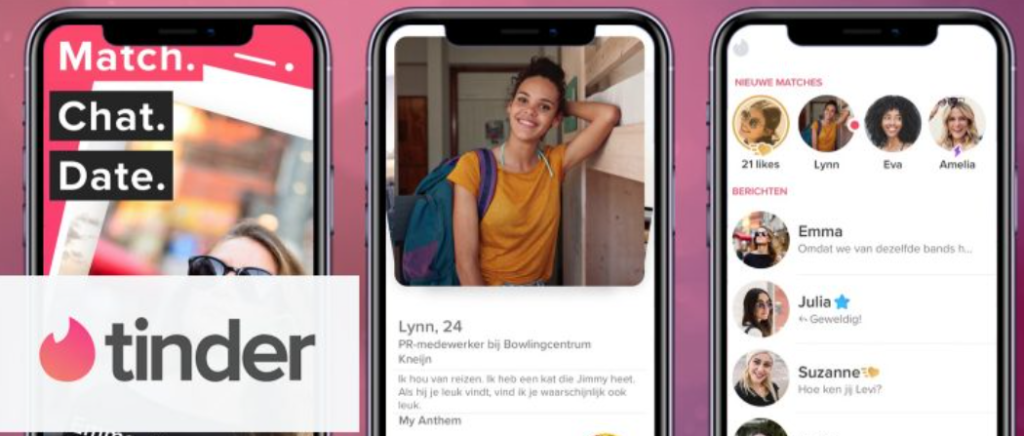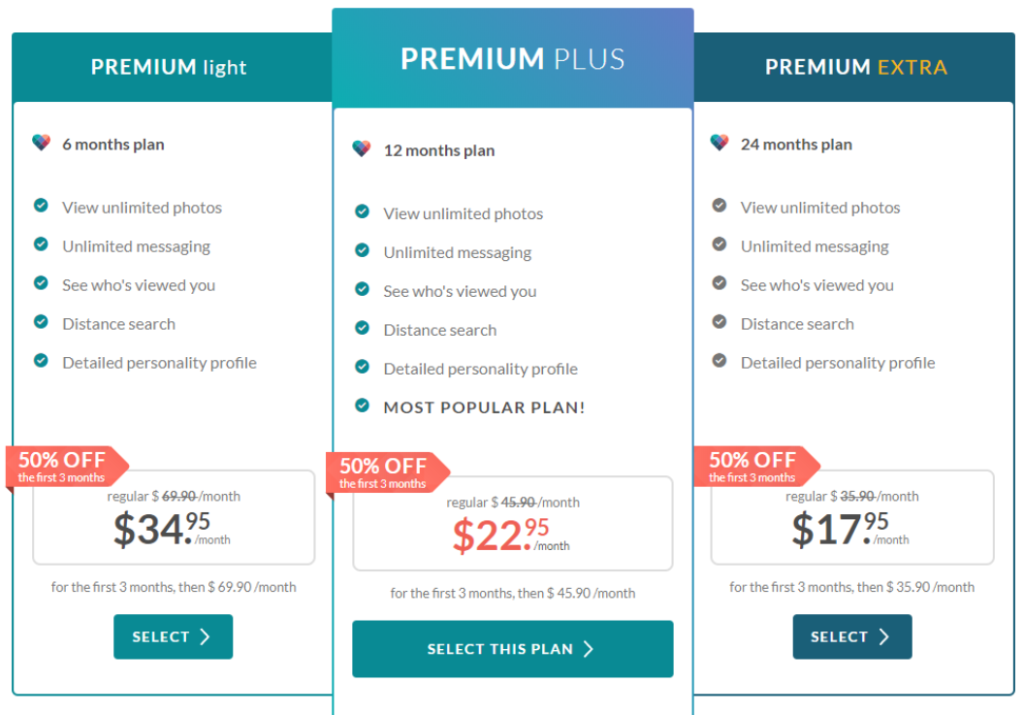Navigating the digital landscape of love and connections has never been more dynamic, with many dating apps vying to help you find the right person. Among these, eHarmony and Tinder are titans, each offering unique paths to romance and companionship. As we delve into the intricacies of eHarmony vs. Tinder, it’s clear whether you’re looking for a serious relationship or are keen on casual dating; these platforms offer gateways to a vast dating pool where potential matches abound.
The Quest for Love in the Digital Age: eHarmony vs. Tinder Lead the Way
In searching for the best dating app or site, users often find themselves toggling between eHarmony and Tinder, two platforms that have redefined the online dating world. eHarmony prides itself on fostering long-term relationships, employing an intricate matching algorithm to connect singles looking for depth and compatibility. Conversely, Tinder popularized the quick swipe, facilitating casual hookups and spontaneous connections, embodying the essence of modern dating.
eHarmony: The Beacon for Serious Relationship Seekers
For those looking for love with a relationship goal in mind, eHarmony offers a sanctuary. Unlike Tinder, eHarmony focuses on deep compatibility, steering away from the superficial to help users find love that lasts. It’s not just a dating service; it’s a platform where serious people embark on the journey to find a match that resonates on multiple levels. eHarmony doesn’t merely facilitate connections; it aspires to forge lasting bonds, making it a popular dating app for those seeking a serious relationship.

Tinder: The Dynamic World of Casual Encounters and Beyond
Tinder has evolved since launching in 2012, transcending its reputation as the go-to app for casual thrills. With features like Tinder Plus and Tinder Gold, it caters to many users seeking everything from casual dating to potential long-term relationships. Tinder offers the freedom to send a message, break the ice, and explore where a mutual match might lead, showcasing the diverse desires of online daters.

Beyond eHarmony and Tinder: Exploring Alternative Dating Platforms
As we explore the best dating apps for 2024, it’s evident that the landscape is rich with options. Bumble, with its unique approach allowing women to make the first move, and Hinge, designed to be deleted, cater to those looking for relationships beyond the casual. OkCupid, Zoosk, and Plenty of Fish (POF) offer varied experiences, from questionnaire-based matching to free dating opportunities. Facebook Dating and Coffee Meets Bagel (CMB) introduce social networking elements to the dating scene, expanding the avenues through which people looking for companionship can connect.
The Future of Online Dating: Innovation and Connection
As we look towards 2024, the evolution of online dating sites and online dating websites continues. The introduction of premium dating services and enhancements in finding a match reflects the industry’s growth. Whether through eHarmony’s algorithmic refinements or Tinder’s expanding features, including Tinder offers and insights into the dating pool, the goal remains to find love, companionship, or whatever form of connection you seek.
Pricing Showdown: eHarmony vs. Tinder
When it comes to choosing between eHarmony and Tinder, understanding the financial investment required for each platform is crucial. eHarmony, known for its in-depth compatibility-based approach, typically offers subscription plans that reflect its status as a service for those seeking long-term relationships. These plans can range significantly in price, often requiring a commitment of several months to a year, with costs that can vary widely but generally start from around $35 to $65 per month, depending on the length of the subscription and specific promotions available at the time. On the other hand, Tinder caters to a more diverse audience with its tiered subscription model, including Tinder Plus and Tinder Gold. Tinder’s offerings are more affordable, with prices starting as low as $9.99 per month for younger users, and varying based on age, location, and the subscription tier chosen. While Tinder provides a free version with limited swipes, the premium features like unlimited likes, rewind, and seeing who likes you first, enhance the user experience significantly, making it a flexible option for users with different budgetary considerations.


Below is a tabulated comparison of the subscription prices for eHarmony and Tinder, highlighting the differences in their pricing models to better inform users about their options.
| Subscription Feature | eHarmony Pricing* | Tinder Pricing* |
|---|---|---|
| Free Version | Available with limited features | Available with limited swipes |
| Monthly Rate | Starts from around $35 to $65 | Plus: From $9.99, Gold: From $29.99, Platinum: Varies |
| 3-Month Plan | Not commonly offered | Plus: Around $19.99/month |
| 6-Month Plan | Around $45/month | Gold: Around $18.83/month |
| 12-Month Plan | Around $35/month | Plus: Around $6.92/month, Gold: Around $12.50/month |
| Key Features | Detailed compatibility matching, unlimited messaging for subscribers | Unlimited likes, Rewind, See who likes you (Gold/Platinum) |
| Special Offers | Often has promotional discounts for longer commitments | Discounts for younger users, occasional promotional rates |
*Pricing is approximate and subject to change. Check the official websites for the most current information and regional pricing variations.
Making Your Choice: Navigating the Best Dating Apps for 2024
Deciding between eHarmony or Match, Tinder or Bumble, or exploring other platforms like Facebook Dating and Coffee Meets Bagel hinges on your dating aspirations. eHarmony and Tinder, along with Bumble, Hinge, and OkCupid, offer gateways to various forms of connection, from those looking for casual hookups to individuals looking for a relationship that stands the test of time. In this digital era of love, the best dating app is the one that aligns with your heart’s desires, be it a serious relationship or casual dating.
In conclusion, whether you resonate more with eHarmony’s approach to creating meaningful connections or Tinder’s dynamic platform for meeting new people, remember that the journey to find love or a meaningful relationship is deeply personal. Each app, from eHarmony and Tinder to Bumble and beyond, offers unique pathways to discovering potential partners in the vast dating pool of the online dating experience. As you navigate this landscape, keep your relationship goals in mind and choose the platform that best suits your quest for connection in 2024 and beyond.
To further elucidate the distinctions and similarities between these two leading platforms, a tabulated comparison follows, providing a snapshot of what each offers to those navigating the complex world of online dating.
| Feature/Aspect | eHarmony | Tinder |
|---|---|---|
| Primary Focus | Long-term relationships, marriage | Casual dating, hookups, potential for relationships |
| Matching Algorithm | Compatibility-based matching on detailed questionnaire | Location-based with swipe mechanism |
| User Base | Users looking for serious commitments | Younger demographic, diverse intentions |
| Key Features | – Detailed profiles<br>- Compatibility scores<br>- Guided communication options | – Quick swipe feature<br>- Instant messaging<br>- Tinder Plus and Gold for additional features |
| Sign-Up Process | Lengthy, requires detailed questionnaire completion | Quick, often linked to social media |
| Subscription Model | Paid subscriptions for full feature access | Free use with optional paid upgrades |
| Success Stories | Known for numerous long-term relationships and marriages | Stories of relationships, but also known for casual encounters |
| User Experience | Intuitive, focuses on deep connections | Fast-paced, encourages spontaneous connections |
| Safety Features | Various safety protocols and profile verification | Photo verification and reporting features |
| Unique Selling Point | Science-backed matching for compatibility | Large user base, ease of use, immediacy |
This table highlights the core differences and unique selling points of eHarmony and Tinder, guiding users in making an informed decision based on their personal preferences and relationship goals.
Comparative Analysis: eHarmony vs. Tinder – best dating apps
To offer a clearer perspective on the distinct paths to romance and companionship provided by eHarmony and Tinder, we present a detailed comparison. This table delineates the pros and cons of each platform, spotlighting their primary focus, unique features, user experience, and more. By evaluating the core differences and unique selling points, individuals navigating the complex world of online dating can make an informed decision that aligns with their personal preferences and relationship goals. Whether seeking a long-term partnership or casual connections, this comparison equips users with the essential insights to choose the platform best suited for their journey toward finding love or companionship in 2024 and beyond.
| Aspect | eHarmony Pros | eHarmony Cons | Tinder Pros | Tinder Cons |
|---|---|---|---|---|
| Focus | Serious, long-term relationships | Less suited for casual dating | Versatile: casual dating to potential long-term relationships | May not cater as well to those seeking serious commitments |
| Matching Algorithm | Detailed compatibility assessments | Time-consuming sign-up process | Quick, location-based matches | Surface-level assessments may miss deep compatibility |
| User Experience | Guided communication options, focus on compatibility | Subscription required for meaningful interaction | User-friendly interface, immediate connections | Overwhelming choice, potential for superficial interactions |
| User Base | Mature demographic seeking committed relationships | Narrower user pool compared to Tinder | Wide, diverse user base | Younger demographic, varied intentions |
| Safety & Security | Rigorous profile verification, focus on user safety | – | Photo verification, active moderation | Potential for fake profiles and security concerns |
| Unique Features | Compatibility scores, in-depth profiles | Higher cost for premium features | Swipe feature, Tinder Plus/Gold for extras | Limited profile information |
This chart aims to provide clarity on the core features, benefits, and drawbacks of eHarmony and Tinder, guiding users to make an informed decision aligned with their personal preferences and relationship goals.
More reviews worth reading:
References:
- EliteSingles Review (2024): Is It Worth Using | By Kimberly Dawn Neumann
- EliteSingles Review | PCMag
- Has anyone tried elite singles? : r/datingoverthirty
- EliteSingles Reviews | Read Customer Service Reviews of elitesingles.com
- EliteSingles Reviews – 550 Reviews of Elitesingles.com | Sitejabber
- EliteSingles Dating Site Review (2024) By Morgan Mandriota Last Updated: Mar 08, 2023
- Elite Singles Matchmaker Review
Contributing Author:
The 2024 comparison between Elite Singles and Bumble highlights distinct dating preferences. Elite Singles targets professionals seeking serious, compatibility-based relationships, while Bumble empowers users, particularly women, to initiate conversations, fostering a dynamic of respect and immediate engagement. This concise guide serves as a valuable tool for singles navigating the digital dating scene, showcasing each platform’s unique approach to meeting diverse relationship goals.

Gavin Moore is a seasoned writer and the editor of the popular blog, WorldSingleDating.com, where he shares insightful articles on dating, relationships, and personal growth. With a passion for storytelling and a deep understanding of the nuances of human connections, Gavin has become a trusted voice in the online dating community.
Gavin’s academic journey began at the University of Oxford, where he pursued a degree in English Literature. His love for the written word and his keen interest in human behavior and emotions were evident in his studies. After completing his degree, Gavin went on to further his education, earning a Master’s in Creative Writing.With a strong foundation in literature and writing, Gavin transitioned into teaching. He spent several years as a lecturer at the University of Cambridge, where he taught courses on creative writing and contemporary literature. His teaching style, characterized by its engaging and interactive approach, made him a favorite among students.

No responses yet